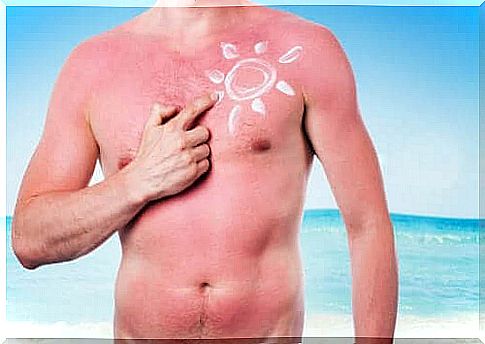4 Harmful Effects Of The Sun On The Skin
Sunburns, burns, premature aging, appearance of spots, even skin cancer … Exposure to the sun’s rays includes risks. The use of sunscreen as well as the adoption of good habits are two essential precautions to protect your skin from the sun.

The sun is fundamental for life. It brings many benefits: it supports the photosynthetic life of plants and produces vitamin D in humans. However, to enjoy the benefits of the sun, you must moderate your exposure to the sun, in order to avoid its harmful effects on our skin.
Yes… Even if it is good to expose yourself to the sun, there is a limit not to be exceeded if you want to protect your skin, eyes and general health from the harmful effects of the sun.
The main negative consequences of excessive sun exposure on the skin are as follows:
- the appearance of wrinkles
- the appearance of spots
- premature aging
- sunburns and burns
- photoallergic reactions
- skin cancer
In the rest of this article, let’s take a closer look at the four harmful effects of the sun on the skin. Take this information into consideration when going out in the sun!
1. Sunburn

Solar radiation is one of the main harmful effects of the sun on our skin. Almost everyone has experienced the unpleasant symptoms of sunburn on the skin at least once in their life. After a day in the sun at the beach or in the mountains without having protected your skin, it is difficult to forget the feeling of discomfort and the pain that we feel during the night and the days that follow.
When we get sunburned, the skin turns red and sometimes blisters appear. The skin is very hot and the simple touch of the clothes is enough to feel pain. In some cases, sunburn can cause fever and dehydration. And in the most extreme cases, the burns can be second degree.
The UVB rays are responsible for sunburns. These rays cause a thickening of the epidermis: there is a protective reaction of the skin against solar radiation. Symptoms appear a few hours after exposure to the sun. The intensity varies depending on several factors, in particular depending on the skin phototype.
2. Premature aging, one of the harmful effects of the sun
The harmful effects of solar radiation accumulate, even if the exposure is low.
One of the most visible effects over time is premature aging. In 90% of cases, premature aging is linked to exposure to the sun : UVA rays penetrate the skin until they reach the dermis and cause rapid and temporary pigmentation by darkening the melanin.
The appearance of spots and wrinkles on the skin and sagging skin are symptoms of premature aging of the skin. The appearance of these symptoms is due to the deterioration of collagen and elastin, deterioration which is linked to repeated and excessive sun exposure.
To prevent premature aging of the skin, it is necessary to apply sunscreen all year round against UVA rays, and not just in summer. Protect yourself whenever you expose your skin to direct sunlight.
3. Sun allergy

Sun allergy may seem like a strange phenomenon since the sun is an element that is present in our life at all times. And yet, there are many people who are allergic to the sun: sun allergy concerns 20% of the population.
In reality, allergy to the sun is linked to an allergy to another agent (allergy to a food, allergy to chlorine in swimming pools, allergy to a cream, allergy to a drug or even allergy to a fabric). The reaction is subsequently activated when the person is exposed to the sun.
4. Skin cancer, the worst of the harmful effects of the sun
Exposure to the sun can also cause skin cancer due to cellular damage caused by UVB rays.
There are several factors that can cause skin cancer.
- Repeated and excessive exposure to the sun. The areas most prone to developing skin cancer are those that are most exposed to the sun, that is, the face, hands and neck.
- The sun burns. Sunburn greatly increases the risk of developing skin cancer.
- The skin phototype. The type of skin also plays a determining role: the risk is greater for people with fair skin and eyes.
- Genetic factors and age. Another determining factor is a family history of melanoma, as is age. People over the age of 40 have a higher risk of developing skin cancer.
Melanoma and carcinoma are the two main types of skin cancer.
- A melanoma is a very aggressive and very malignant skin cancer.
- Carcinoma, the most common skin cancer, usually grows slowly and is easier to treat.









